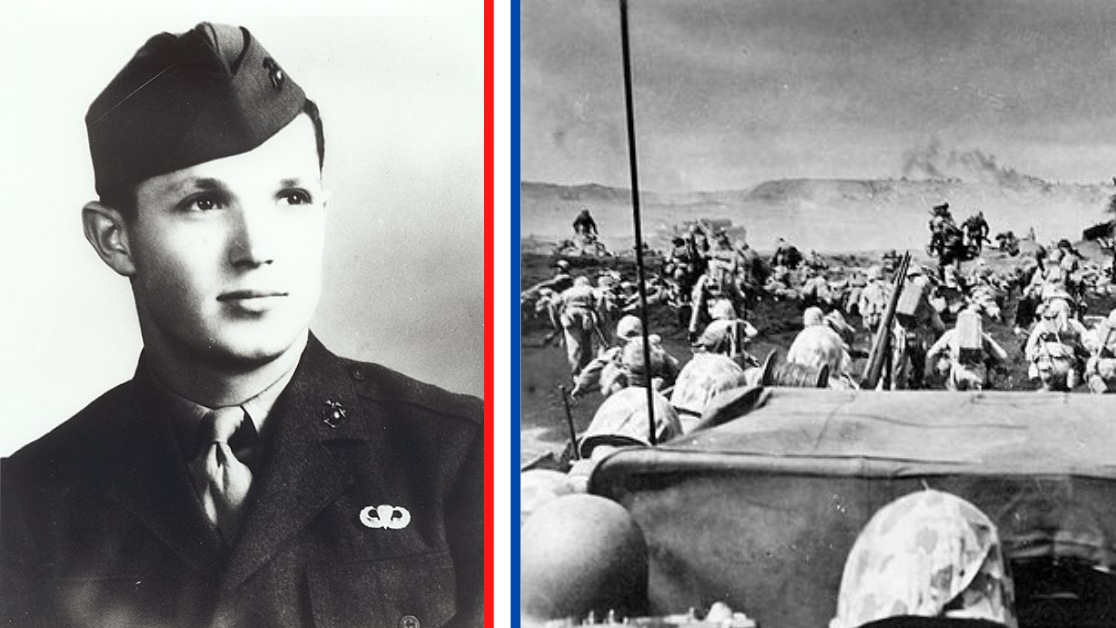A Marine fought at Iwo Jima with an aircraft machine gun

SUMMARY
Tony Stein had an epic military career. An Ohio native, he worked as a toolmaker before World War II, where he picked up some skills that (little did he know) would come in handy while fighting the Japanese. Stein joined the Marine Corps Reserve in 1942, because he knew they would be among the first to be sent into combat – and he was right.
Stein was a member of the experimental and short-lived Marine Corps Paratroopers. They never made a combat jump, but the unit was so highly trained that, with a little experience under their belt, became as capable in combat as the Marine Raiders. In 1944, the paratroopers were disbanded, but Tony Stein didn’t head home, he headed for a wartime legacy that would outlive him for decades.
When his paratrooper unit was disbanded, Stein was fighting on Bougainville, New Guinea, which is technically in the Northern Solomon Islands. He fought an incredible battle at Bougainville, where he is remembered for taking out five enemy snipers in a single day.Soon, he was transferred to the 5th Marine Division – and pick up a distinctive new weapon.
From the wreckage of a Dauntless SBD dive bomber, Stein pulled out one of the aircraft’s four onboard weapons. It was an AN/M2 Browning .30-caliber machine gun, a variation of the M1919 light machine gun. Because it was designed for use in aircraft, however, it was much lighter than its man-portable counterpart and had almost three times the rate of fire.
With the help of an armorer, Stein, the former toolmaker, added a butt stock to the gun. He also borrowed the sights from an M1 Garand rifle and a bipod from the Browning Automatic Rifle (BAR) infantry weapon. He named the new machine gun “Stinger,” and even with 100 rounds of belt-fed ammunition in a box, it only weighed 25 pounds.
On February 19, 1945, he stormed the beaches of Iwo Jima with Stinger and a few thousand of his fellow Marines. He advanced inland from the beach head, among the first to create a defensive perimeter for Marines to land. From there, he assaulted enemy fortifications, of which there were many on the island.
Stinger allowed him to advance on the enemy pillboxes, bunkers and caves quickly, beating out the enemy’s rate of fire, essentially strafing them from the ground. In all, he took out eight of the Japanese defensive formations. He would have to return to the beaches eight times to replenish his ammunition and each time he went, he carried a wounded Marine with him. For his push against the enemy and the selfless rescue of his comrades under withering fire, he would receive the Medal of Honor.
But neither Tony Stein nor Stinger were done with Iwo Jima just yet. Stein aided his comrades in the capture of Mount Suribachi, from the top of which the Marines would take their most famous photograph, the raising of the flag. Stein was wounded in the assault on Suribachi and evacuated to a hospital ship.
While he recovered, his unit continued its advances on Iwo Jima. After Mount Suribachi, they were tasked to assault Hill 362A. Moving up the west side of the hill, they took heavy casualties. When Stein got word that his men were being pummeled by the enemy, he got out of his hospital bed and rejoined them on the island.
On March 1, 1945, he was leading a 19-man patrol to take out an enemy machine gun emplacement, when a sniper shot him. He died of his wounds, but his service and exploits were not forgotten. Ohio’s governor presented Stein’s Medal of Honor to his widow one year after the landing on Iwo Jima.
SHARE
